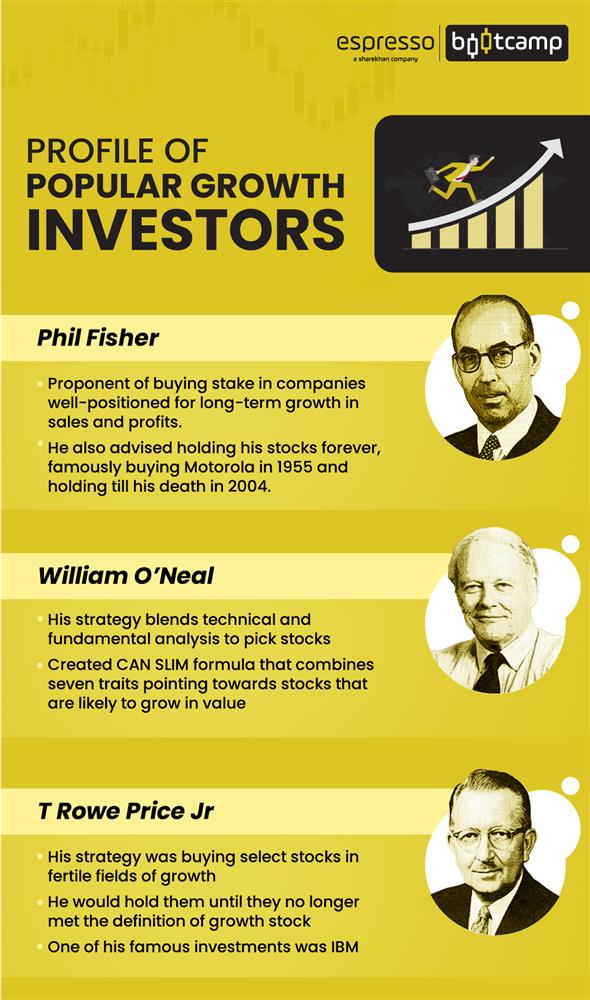We have already seen what value investing is in our preceding chapters. To quickly recap, a value stock is a relatively cheap stock, which is available at a bargain. To qualify as a value stock, it has to meet certain criteria that can bring out the value, which essentially means the current share price is less than its intrinsic value. Knowing about them will take you many steps closer to value investing.
Factors to help identify value stocks include:
- Price/Earning (PE) Ratio
- Book Value
- Debt to Equity Ratio
- Earning Growth
- Dividend Payout
Price to Earnings (P/E) Ratio
PE ratio is the current share price of the company divided by earnings per share (EPS) - the value market has assigned to every rupee the company earns.
For example, if a share price is Rs 200 and EPS is Rs 20, the PE ratio is 10. This means that every rupee earned is valued 10 times more.
From the value investing perspective, this is how the PE ratio helps understand the value.
Let’s assume there are two stocks, A and B. Stock A trades at Rs 100, and stock B at Rs 80. In this case, stock A looks expensive.
However, if the industry PE is 20, stock A has a PE of 20, and stock B has a PE of 35, stock A is cheaper despite a higher share price. A company with a low PE ratio is usually an indication of weak current as well as future performance.
However, stock B has higher PE than the industry, as well as Stock A. A high PE ratio could mean that a company's stock is overvalued or that investors are expecting high growth rates in the future and are willing to pay more.

Book Value (B/V)
Book value is another important factor for investors using a value investing strategy.
Book value is determined by adding up everything that counts as assets and subtracted by everything that counts as liabilities for a company. This is divided by the outstanding share capital.
Analysts place very high importance on book value because it represents a fair and accurate picture of the value of the stock. It is not subjective as it is arrived at using historical financial data and gives a good idea of the company’s worth.
If the book value is lesser than the share price, it means the stock offer value, as the share price does not necessarily capture what the company is actually worth. Asset-heavy companies such as cement and steel tend to have a higher book value compared to those in the software sector.
However, conversely, if the share price is higher than the book value, it does not mean the share is overpriced. The market could be factoring in other intangible assets, such as intellectual property.
Debt to Equity Ratio
This ratio essentially tells us the company’s total debt compared to its total shareholders' equity. Just like having too much debt is bad for a person, for companies too, having a high debt is also not a good sign.
The debt-to-equity ratio can vary across industries because operations and business environments differ. A higher ratio indicates a company’s capital structure (or how it is financed) is primarily debt, while a lower ratio shows that it tilts more towards equity financing.
If a company has total debt of Rs 20 crore and an equity base of Rs 50 crore, the debt-to-equity ratio is 0.40. This means for every rupee in its shareholder funds, the company has Rs 0.40 as debt.
Again, a higher ratio is not bad if the company has significant cash flows, which enables it to service its debt. Higher debt is a sign of caution if the company is not doing well or is on the decline.
Earnings Growth
Earning growth is one of the easiest methods to see if a company is growing. In value investing, as compared to growth investing, there is a lesser emphasis on future or projected earnings. What has to be seen is if the company is profitable now and if it has been earning profits steadily over time.
Earning growth is captured in earnings per share or EPS. This is determined by dividing profits with equity capital. It tells us how much the company earns for every rupee invested. Since value investing is for the long term, the focus is not on quarterly earnings but on steady growth over the past few years.
Dividend Payout
Companies that give regular dividends to shareholders are always worth investing in, as dividends can create a steady stream of income. Value investing can be slow in terms of capital appreciation, and regular dividends are what can keep cash flows going.
If a company earns a net profit of Rs 10 crore and pays a dividend of Rs 4 crore, its dividend payout is 40 per cent. This means that it gives out 40 per cent of its profits back to shareholders and retains the rest to invest back into the business.
Points to Remember
- While screeners can help spot value investing opportunities, none of them should be considered in isolation
- Look at value investing through various lenses and invest in quality companies over a long term
 0
|
0
|
 0
0
 Modules
Modules

 Watch
Watch 
